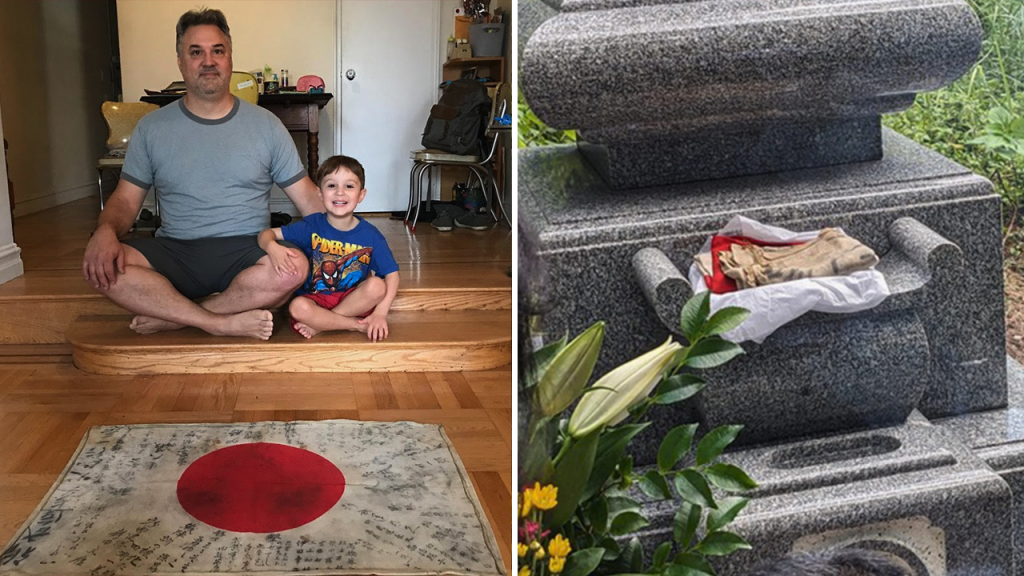A man in New York inherited a “Yosegaki Hinomaru” banner, also known as a good luck flag, from his grandfather who served in the United States during World War II. Scott Stein had originally planned to have the flag restored, but after speaking with an expert, he decided to return it to its rightful owner. His grandfather, Bernard Stein, served in World War II between 1942 and 1945, first at the U.S. Army boot camp at Camp Croft, South Carolina, and then in the Philippines with the U.S. Army’s 38th Infantry Division, known as the Avengers of Bataan. The flag had hung in his grandfather’s house for many years and Stein was always fascinated by it as a child.
Like many veterans, Bernard Stein did not speak openly about the war or his wartime experiences. As a collector with an appreciation for the past, Scott Stein was in the process of having the flag restored when the expert recommended he return it in 2017. After seeing news of a similar flag being returned to Japan, Stein found the Obon Society in Oregon, a nonprofit that facilitates the reconciliation of families by returning items taken during times of war, such as this flag. Many Japanese soldiers carried their country’s flags inscribed with names and messages from loved ones for good luck.
After initial contact and correspondence with the Obon Society, the flag was prepared to be shipped back to Japan. After a seven-year search, the Obon Society connected the flag to a soldier named Yukikazu Hiyama, who had died in 1945. The flag was then returned to the fallen soldier’s son, who hosted a returning ceremony with his entire family. The son carried a portrait of his father and mother, explaining that his mother had waited all her life for her husband to return home, but passed away without ever seeing him again. The son carried the flag to the cemetery to unfurl it in front of his mother’s grave, showing her that her husband had finally returned home.
The Obon Society’s representative noted that these flags are regarded as “non-biological human remains” and bring a similar intensity and closure to Japanese MIA families as the return of bone and teeth brings to American MIA families. For the son, the flag is the only memento he has of his father. The return of the Yosegaki Hinomaru flag to its rightful owner brought closure and a sense of peace to the family of the fallen soldier. The significance and emotional impact of returning such items taken during times of war cannot be understated.
The decision to return the flag was a deeply personal and meaningful one for Scott Stein, who wanted to honor his grandfather’s memory and the memory of the soldier who carried the flag into battle. The process of returning the flag to its rightful owner involved a seven-year search and a connection with the fallen soldier’s son, who received the flag with gratitude. The son’s act of unfurling the flag in front of his mother’s grave brought a sense of closure and completion for the family, as his mother had waited her entire life for her husband to return home. The return of the flag symbolized the soldier’s long-awaited homecoming.
In returning the Yosegaki Hinomaru flag to its rightful owner, the Obon Society plays a vital role in facilitating reconciliation and closure for families affected by war. The organization’s mission to locate and return items such as flags to their original owners brings peace and healing to families who have been separated by conflict. Through their efforts, the Obon Society helps to honor the memory of fallen soldiers and provide comfort to their surviving relatives. The return of the flag to the fallen soldier’s son allowed him to connect with his father’s memory in a meaningful way, providing a tangible link to his past and a sense of closure that had eluded the family for many years.


